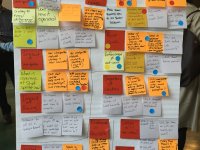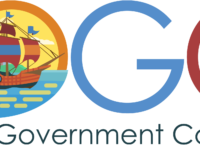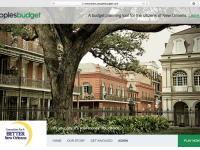Louisville, like many cities, experienced a spike in homicides starting in 2016. Recent deployment of gunshot detection technology has been effective at pinpointing where and when gunshots occur. On average, police officers arrive long after the critical, first ten minute window to stabilize injuries. Placing drones strategically throughout our city, we will be able to deploy a camera to the scene within 90 seconds of when a gun is discharged and rapidly dispatch emergency medical personnel.
Country: United States
Minneapolis Public Schools Culinary and Wellness Services rolled out the "Street Eats" food truck in the summer of 2018; designed to increase access to no cost, healthy meals for all youth ages 18 and under. The truck serves at community locations during the summer months where food access is currently limited, such as parks, schools, camps, and libraries.
The OGC framework allows governments to work together to build useful tools for us all at no cost. Governments become project managers and private companies pay developers to do the work to spec and publish the cloud infrastructure-as-code online for any other entity to use for free.
We have a successful mobility project with over 80 governments, multiple public-sector entities, and private sector companies to fund and build it, and there are 3 other projects under development.
This project is about how new transportation technologies can be integrated into an existing public transit system. The City of Lincoln successfully tested a demand-responsive autonomous microtransit vehicle that operated in the University of Nebraska's Innovation Campus. Use of autonomous microtransit vehicles in public sector transportation systems will play a critical role in ensuring safe, efficient, affordable and equitable access to many people across the world well into the future.
Summer Design School is a new approach to teaching and learning human-centred innovation for government employees. It accelerates the development of critical thinking, creative collaboration, and human-centred design capabilities in civil servants with little to no previous exposure to design methods by means of an immersive, cross-sector, experience based curriculum.
Over a third of U.S. federal employees are eligible to retire in the next five years, yet only 6% of employees are under 30—a pressing issue given the rate of innovation. Piloted as an effort between agencies and a student-led nonprofit, the Civic Digital Fellowship recruits the next generation of technologists—students and recent grads—pairing them with in-need agencies. It has scaled to six agencies, and is an attractive on-ramp for technical students into public service.
Tens of millions of Americans are eligible to clear their criminal record, but due to a complicated, costly, and time-consuming process, only a small fraction have been able to do so. Clear My Record makes automatic record clearance possible by using an open source algorithm to review records, determine eligibility, and produce clearance motions. It shifts the burden of record clearance off of individuals by enabling the government to clear all records at scale and reinvest in communities.
In May 2016, the Mayor of San Francisco launched the Safe and Clean Neighborhoods Promise. This was a new initiative to improve the quality of life in San Francisco with a coordinated approach to delivering City services better and faster. He issued an Executive Directive to Department Heads responsible for quality of life issues directing them to prioritize services so all residents have access to clean, safe, maintained public spaces and facilities. To ensure success, the mayor created the…
The Better Government Movement (BGM), housed on Innovation.gov, builds a 21st century, delivery-driven government. BGM creates an inclusive space where public servants can grow their creative capacity and learn new tools, approaches, and mindsets to jumpstart innovation. This is in service of solving government-wide problems and affecting positive change within agencies and government writ large.
The People’s Budget is an interactive, mobile-friendly website that demystifies local spending by asking residents to play "mayor for a day" by balancing their city budget. Users learn more about how government works and how it spends money before deciding for themselves how to divide discretionary funds. The answers to these questions are synthesized and reported back to the community and city leaders to help get limited tax dollars to the programs that need them the most.






